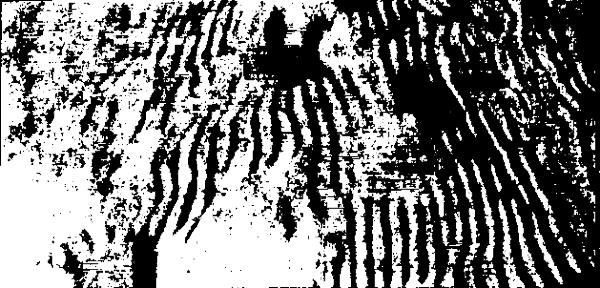 |
Science Frontiers ONLINE No. 128: MAR-APR 2000 |
|
|
Frozen in Time
Since Antarctica is often buffeted by fierce winds, one would naturally think that these snow dunes have an aeolian origin like desert sand dunes. This does not seem the be the case. Comparisons made using recently declassified images taken in the 1960s by U.S. military satellites reveal that the snow dunes have not moved in over 30 years! Some-thing besides wind-driven snow must be helping to sculpt these immense stationary patterns.
(Tomlin, Sarah; "Vast Snow Dunes Frozen in Time," Nature, 402:860, 1999.)
Comment. The fossil "string dunes" of Australia closely resemble the Antarctic snow megadunes in pattern and size, but of course they are composed of sand. "Megaripples" charted by sonar and shaped by water currents on the ocean floors are also comparable. See ETR3 in Carolina Bays for more.

Other Sites of Interest
|